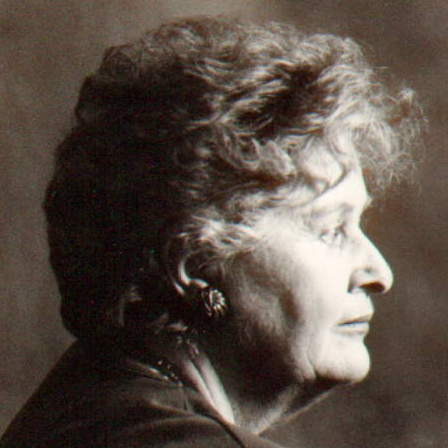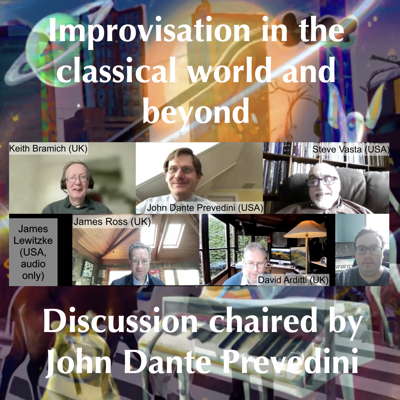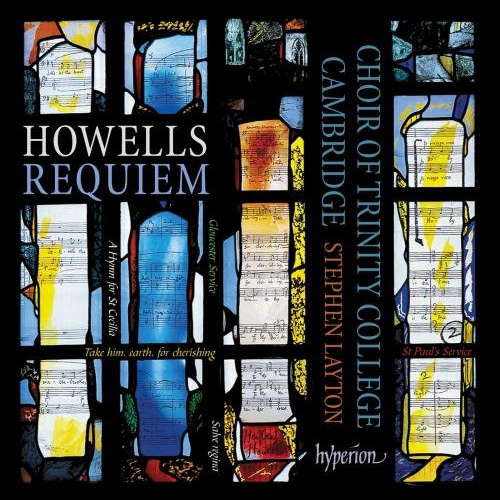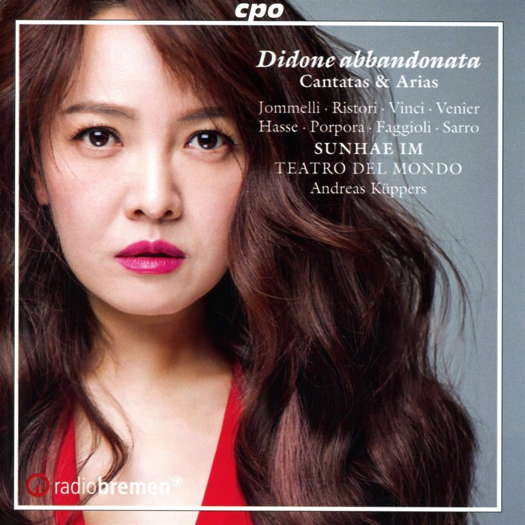 SPONSORED: An Integral Part - Lindsey Wallis looks forward to the Canadian Music Centre's tribute concert to composer Roberta Stephen.
SPONSORED: An Integral Part - Lindsey Wallis looks forward to the Canadian Music Centre's tribute concert to composer Roberta Stephen.
All sponsored features >>
 DISCUSSION: John Dante Prevedini leads a discussion about Improvisation in the classical world and beyond, including contributions from David Arditti, James Lewitzke, James Ross and Steve Vasta.
DISCUSSION: John Dante Prevedini leads a discussion about Improvisation in the classical world and beyond, including contributions from David Arditti, James Lewitzke, James Ross and Steve Vasta.
 SPONSORED: CD Spotlight. Beautifully Apt - Choral music by Herbert Howells, heard by Robert Anderson.
SPONSORED: CD Spotlight. Beautifully Apt - Choral music by Herbert Howells, heard by Robert Anderson.
All sponsored features >>

A Good Anthology
The story of Dido, Queen of Carthage,
as seen by eight Baroque composers,
heard by GIUSEPPE PENNISI
'As the same singer interprets samples of the various versions, the listener appreciates Sunhae Im's versatility.'
Dido, Queen of Carthage, who fell in love with Aeneas and was left behind during his travel from Troy to Rome, is one of the greatest tragic stories of the antiquities. The first British opera - Dido and Aeneas by Henry Purcell, premiered in 1689 - was based on that myth. In about the same period, in Italy and Germany, several Baroque composers utilized the same plot as well as many of its variations. In the eighteenth century, Metastasio, the theatre and opera mastermind at the Imperial Court of Vienna, wrote a libretto set to music by as many as sixty different composers. In the Romantic period, the tragedy was the source of inspiration of Berlioz's second part of Les Troyens. I reviewed in this magazine a live staging of a revival of Leonardo Vinci's Didone Abbandonata to Metastasio's successful libretto - A Great Revival in Music & Vision Magazine, 15 January 2017 - as well as a grandiose production - La Scala, Royal Opera House, Weiner Staatsoper and San Francisco Opera - of Berlioz's Les Troyens - Traditional and Bold in Music & Vision, 14 April 2014.
This new recording is quite interesting on two accounts: it includes a good anthology of versions of Dido's tragedy as seen by eight Baroque composers; and it acquaints some of us with the Korean soprano Sunhae Im and with the ensemble Teatro del Mondo. They perform mostly in Germany. Although the soprano has a rich discography, mainly as a part of the cast of operas and oratorios, this is her third solo recording. Teatro del Mondo is a comparatively new Baroque ensemble and has a rather limited discography.
The recording opens with an emotional and infinitely sad aria by Johann Adolph Hasse played con sordino.
Listen — Johann Hasse: Ombra cara (Didone abbandonata)
(track 1, 0:38-1:30) © 2019 cpo :
It is in sharp contrast with the second item: the sea storm aria Già si desta la tempesta by the Neapolitan composer Domenico Sarro. The aria is the conclusion of the first rendering of Metastasio's libretto about the proud yet unfortunate Queen.
Listen — Domenico Sarro: Già si desta la tempesta (Didone abbandonata)
(track 2, 0:00-0:48) © 2019 cpo :
Giovanni Alberto Ristori, assistant music director under Hasse, set to music a cantata based on a poem by Princess Maria Antonia. It is a lament in the galant style. It is bright and elegant with the violins underlying the emotional intensity under the noble surface.
Listen — Giovanni Ristori: Quante volte (Didone, Componimento drammatico)
(track 3, 0:03-0:49) © 2019 cpo :
On the contrary, Michelangelo Faggioli's cantata begins furiously with a short recitative, followed by a bitter aria on the Queen's submission to fate and, hence, suicide.
In Leonardo Vinci's opera, also to Metastasio's libretto, a minuet lays the foundations for a song of praise to the morning star and a bright coloratura.
Instead, Nicolò Jommelli depicts the conclusion of the tragedy vividly and meticulously with a large format aria alternating with two impressive recitatives.
Listen — Nicolò Jommelli: Cantata 'Didone abbandonata'
(track 6, 8:52-9:47) © 2019 cpo :
In Gerolamo Venier's opera, on Metastasio's text, the entry aria Son Regina e sono amante is a presentation of a forceful and nearly arrogant Dido while refusing the marriage proposal of an unloved opponent. The violins adorn the aria in virtuoso manner.
Nicola Porpora's cantata uses Metastasio's libretto too. It is quite melodic and has a strong instrumental accompaniment. It calls attention not only to Dido but also to others abandoned women as well. The recitative includes daring harmonic modulations.
Listen — Nicola Porpora: Cantata 'Abbandonata e sola'
(track 8, 5:22-6:06) © 2019 cpo :
In Sarro's version of the same text, Dido surrenders herself and her kingdom to destruction. The strings accompany the recitative in a sequence deprived of all colours, thus very cruel.
Listen — Domenico Sarro: Vado, ma dove (Didone abbandonata)
(track 9, 1:29-2:15) © 2019 cpo :
The CD ends with the Largo andante from the Violin Concerto D 96 in A major by Giuseppe Tartini, almost a consoling anthem to Dido's tragedy.
In short, the listener has a good sample of how Dido's tragedy and Metastasio's text were rendered differently by various Baroque composers: from the very tender interpretation to the highly dramatic reading.
As the same singer interprets samples of the various versions, the listener appreciates Sunhae Im's versatility. She reminds me of Sumi Jo, another Korean soprano very active in Europe until recently. As Sumi Jo, she is a lyric soprano who can switch easily from dramatic or pathetic roles to brilliant coloratura parts.
Teatro del Mondo is a recently created ensemble. Most of its members met and developed mutual esteem while working on the international Orfeo project directed by Gabriel Gorrido, one of the leading Monteverdi specialists. They have performed in several Baroque festivals. Their conductor, Andreas Küppers, is a specialist of historical interpretations who plays harpsichord and fortepiano. He has been the assistant to René Jacobs for several years.
A CD to enjoy and to learn about various aspects of the Baroque.
Copyright © 14 March 2020
Giuseppe Pennisi,
Rome, Italy

CD INFORMATION: DIDONE ABBANDONATA - CANTATAS AND ARIAS
FURTHER INFORMATION: CLASSIC PRODUKTION OSNABRÜCK (CPO)
FURTHER INFORMATION: LEONARDO VINCI
FURTHER INFORMATION: JOHANN ADOLPH HASSE
FURTHER INFORMATION: NICOLA ANTONIO PORPORA


